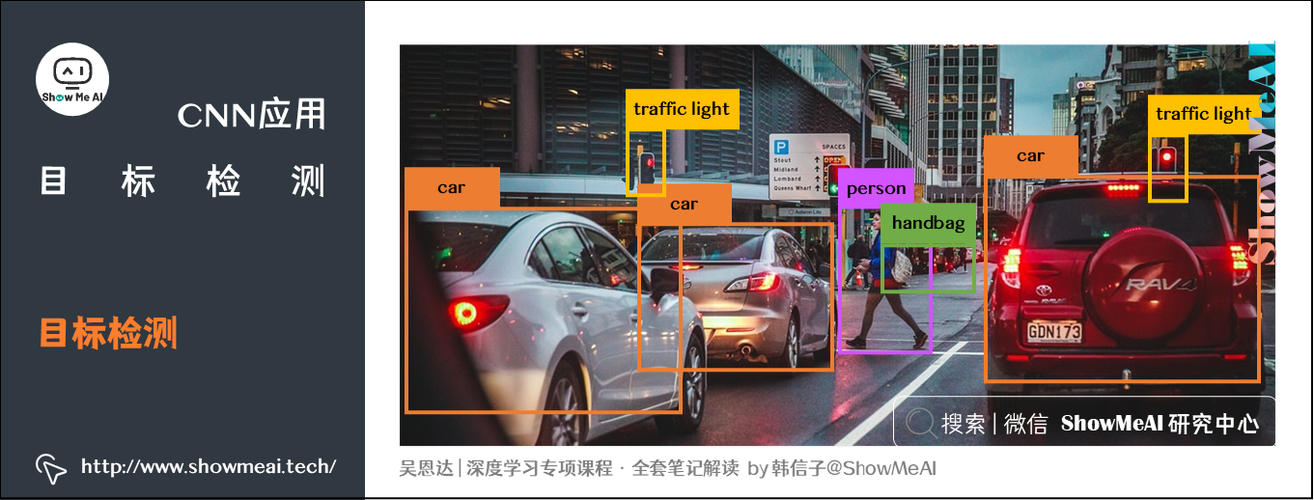OpenCV深度学习应用:探索OpenCV与深度学习的融合,解锁图像处理新能力
发布时间: 2024-08-14 21:10:22 阅读量: 46 订阅数: 49 


OpenCV深度学习模块在图像处理中的应用探索(包含详细的完整的程序和数据)

# 1. OpenCV简介**
OpenCV(Open Source Computer Vision Library)是一个开源计算机视觉库,为图像处理、视频分析和机器学习提供了广泛的算法和函数。它由英特尔公司开发和维护,并被广泛应用于学术研究和工业应用中。
OpenCV提供了一系列图像处理功能,包括图像读取、写入、转换、增强、分割和分析。它还支持视频捕获、视频分析和视频编解码。此外,OpenCV还集成了机器学习算法,如支持向量机、决策树和神经网络,使其能够用于图像分类、目标检测和图像分割等任务。
# 2. 深度学习基础
深度学习是机器学习的一个子领域,它使用多层人工神经网络来学习数据中的复杂模式。深度学习模型能够从大量数据中自动提取特征,并对复杂问题进行预测和决策。
### 2.1 深度学习的基本概念
#### 人工神经网络
人工神经网络(ANN)是深度学习模型的基础。ANN由称为神经元的简单处理单元组成,这些神经元相互连接并形成层。输入数据通过输入层进入网络,然后逐层传递,直到到达输出层。
#### 反向传播
反向传播是训练深度学习模型的关键算法。它通过计算模型输出与预期输出之间的误差,然后将误差反向传播到网络中,调整神经元的权重和偏置,以减少误差。
#### 激活函数
激活函数是神经元中应用的非线性函数,它确定神经元的输出。常见的激活函数包括 ReLU、Sigmoid 和 Tanh。
### 2.2 深度学习的模型和算法
#### 卷积神经网络(CNN)
CNN是一种专门用于处理图像和视频数据的深度学习模型。它使用卷积层提取图像中的空间特征,并使用池化层减少特征图的维度。
#### 循环神经网络(RNN)
RNN是一种用于处理序列数据的深度学习模型,例如文本和时间序列。它使用循环单元来记住序列中的先前的信息,并将其用于对当前输入进行预测。
#### 生成对抗网络(GAN)
GAN是一种生成式深度学习模型,它使用两个神经网络:生成器和判别器。生成器生成数据,而判别器试图区分生成的数据和真实数据。
**代码块 1:**
```python
import tensorflow as tf
# 定义一个简单的卷积神经网络模型
model = tf.keras.Sequential([
tf.keras.layers.Conv2D(32, (3, 3), activation='relu', input_shape=(28, 28, 1)),
tf.keras.layers.MaxPooling2D((2, 2)),
tf.keras.layers.Conv2D(64, (3, 3), activation='relu'),
tf.keras.layers.MaxPooling2D((2, 2)),
tf.keras.layers.Flatten(),
tf.keras.layers.Dense(128, activation='relu'),
tf.keras.layers.Dense(10, activation='softmax')
])
# 编译模型
model.compile(optimizer='adam', loss='sparse_categorical_crossentropy', metrics=['accuracy'])
# 训练模型
model.fit(x_train, y_train, epochs=10)
```
**逻辑分析:**
这个代码块定义了一个简单的卷积神经网络模型,用于对 MNIST 手写数字数据集进行分类。模型包含卷积层、池化层、全连接层和激活函数。
**参数说明:**
* `Conv2D`:卷积层,指定卷积核大小、激活函数和输入形状。
* `MaxPooling2D`:池化层,指定池化窗口大小。
* `Flatten`:将特征图展平为一维向量。
* `Dense`:全连接层,指定神经元数量和激活函数。
* `compile`:编译模型,指定优化器、损失函数和评估指标。
* `fit`:训练模型,指定训练数据和训练轮数。
# 3. OpenCV与深度学习的融合**
### 3.1 OpenCV中的深度学习模块
OpenCV 4.0 引入了深度学习模块,为图像处理和计算机视觉任务提供了强大的深度学习功能。该模块包含以下组件:
- **dnn**:用于加载、执行和训练深度神经网络。
- **dnn_objdetect**:提供预训练的物体检测模型,如 Haar 特征和 HOG 特征。
- **dnn_segmentation**:提供预训练的图像分割模型,如 FCN 和 U-Net。
- **dnn_superres**:提供图像超分辨率模型,如 SRGAN 和 EDSR。
- **dnn_videostab**:提供视频稳定模型,如 Kalman 滤波和光流。
**代码块:加载预训练的物体检测模型**
```python
import cv2
# 加载 Haar 特征级联分类器
haar_cascade = cv2.CascadeClassifier('haarcascade_frontalface_default.xml')
# 加载图像
image = cv2.imread('image.jpg')
# 将图像转换为灰度
gray = cv2.cvtColor(image, cv2.COLOR_BGR2GRAY)
# 检测人脸
faces = haar_cascade.detectMultiScale(gray, 1.1, 4)
# 在图像上绘制人脸边界框
for (x, y, w, h) in faces:
cv2.rectangle(image, (x, y), (x + w, y + h), (0, 255, 0), 2)
# 显示结果
cv2.imshow('Detected Faces', image)
cv2.waitKey(0)
cv2.destroyAllWindows()
```
**逻辑分析:**
这段代码使用 OpenCV 的 dnn_objdetect 模块加载 Haar 特征级联分类器,该分类器用于检测图像中的人脸。它将图像转换为灰度,以提高检测精度。然后,它使用分类器检测图像中的人脸,并在图像上绘制边界框。
### 3.2 深度学习模型的集成和部署
将深度学习模型集成到 OpenCV 应用程序中涉及以下步骤:
1. **加载模型:**使用 dnn.readNet() 函数加载预训练的模型。
2. **预处理数据:**将输入数据转换为模型所需的格式。
3. **执行推理:**使用 dnn.forward() 函数执行推理,得到模型的输出。
4. **后处理数据:**对模型输出进行后处理,提取所需信息。
**部署深度学习模型**涉及将模型打包为可执行文件或库,以便在不同平台上使用。OpenCV 提供了以下选项:
- **OpenVINO:**一个优化框架,可将深度学习模型部署到各种设备上。
- **TensorFlow Lite:**一个轻量级框架,可将 TensorFlow 模型部署到移动和嵌入式设备上。
- **ONNX:**一个开放标准,可将深度学习模型转换为可移植格式。
**代码块:使用 TensorFlow Lite 部署图像分类模型**
```python
import cv2
import tensorflow as tf
# 加载 TensorFlow Lite 模型
interpreter = tf.lite.Interpreter('model.tflite')
interpreter.allocate_tensors()
# 加载图像
ima
```
0
0





